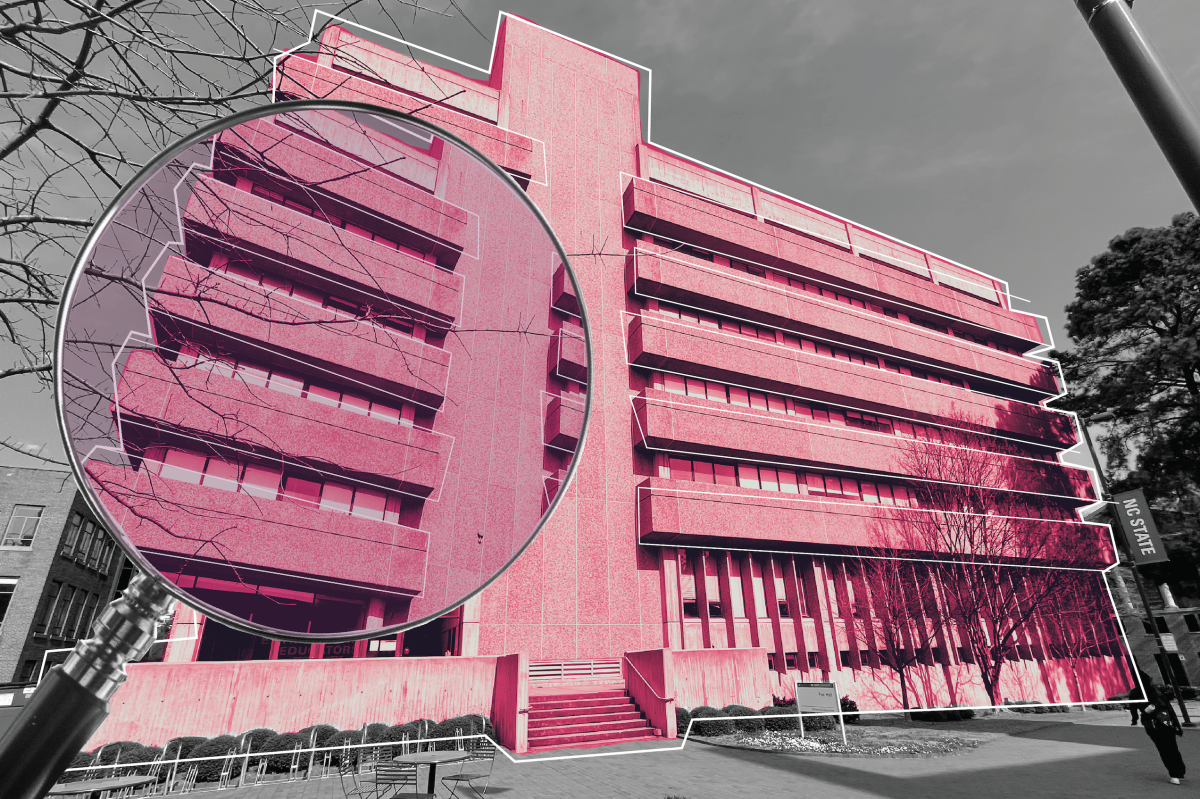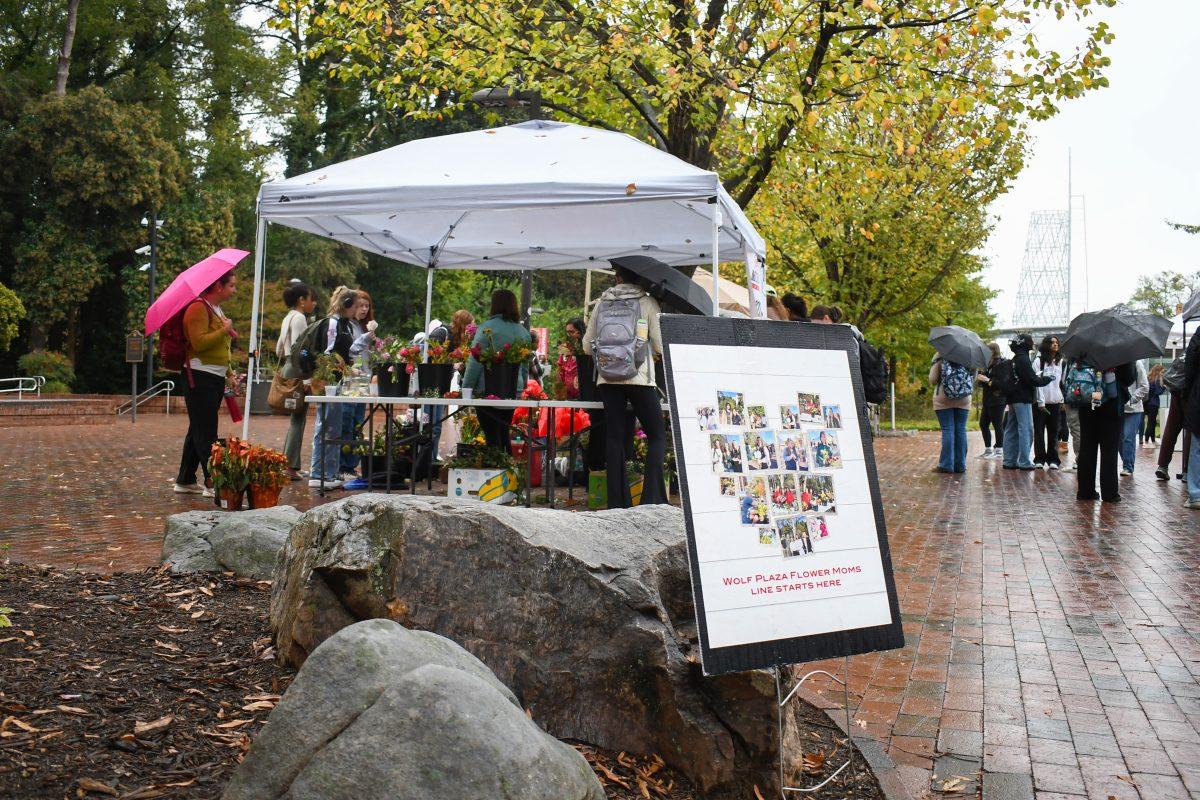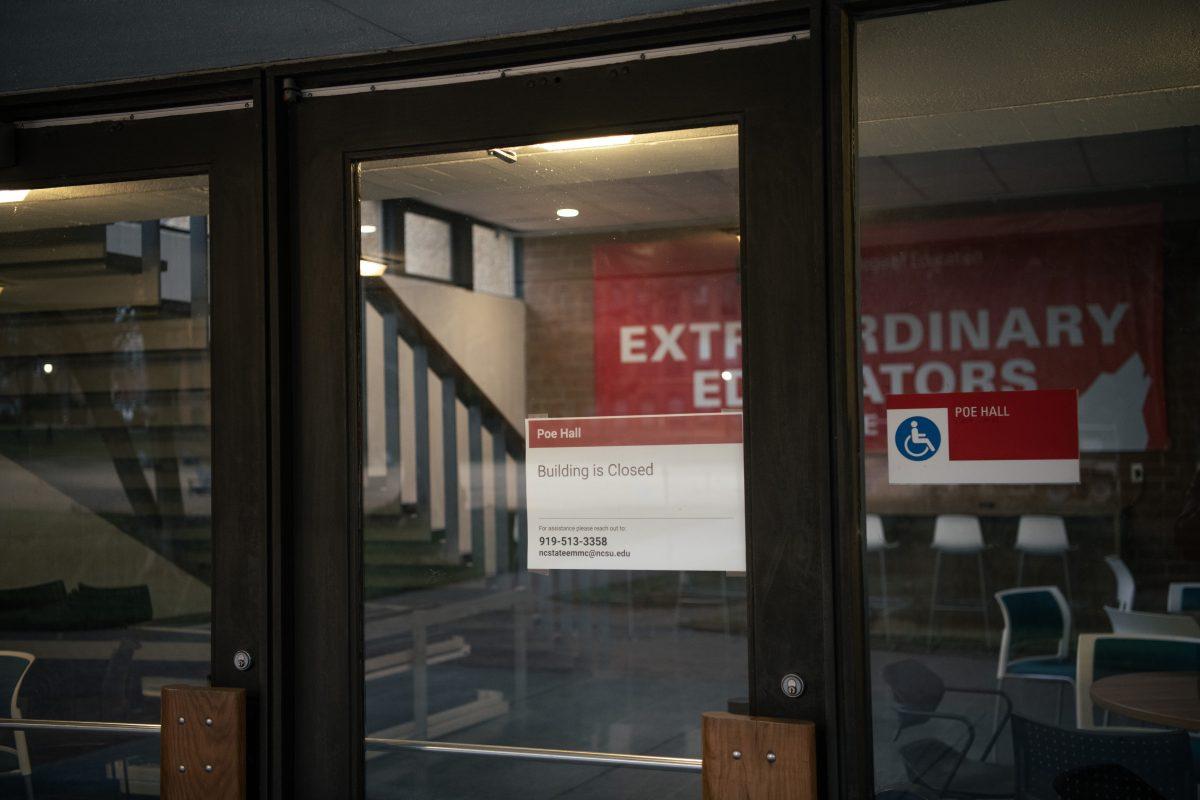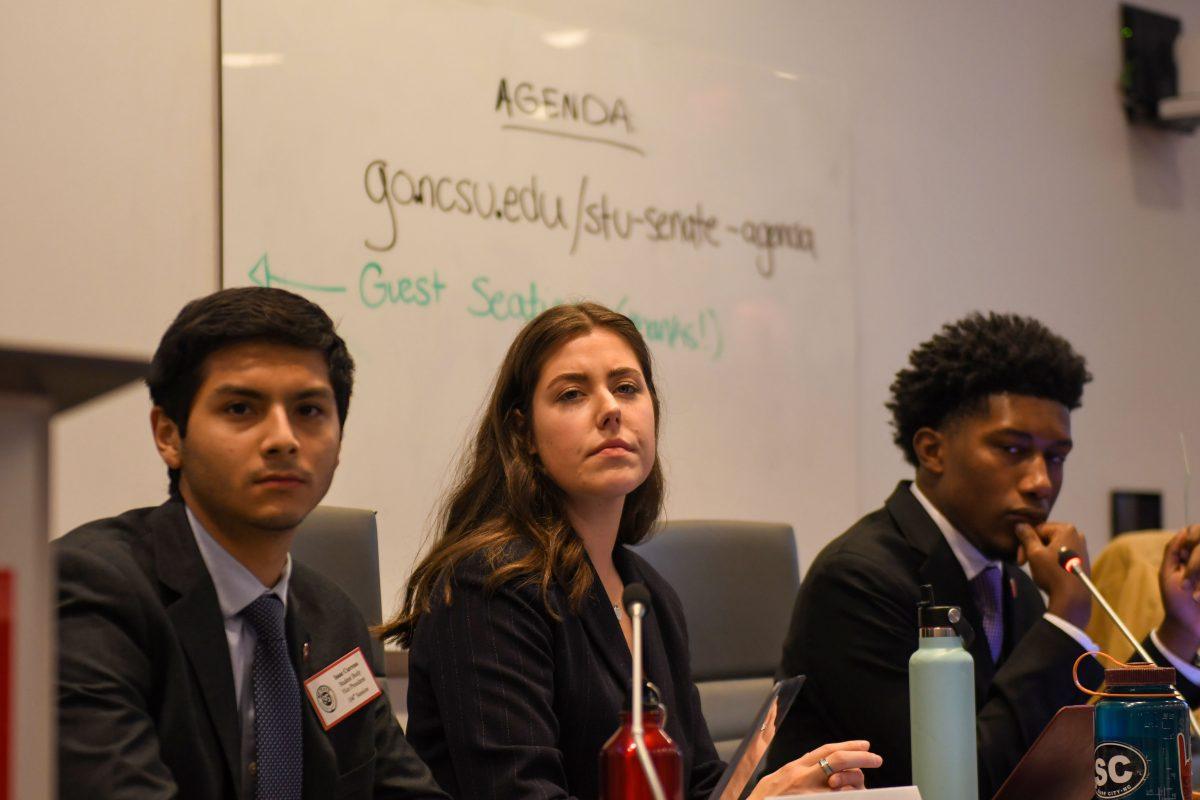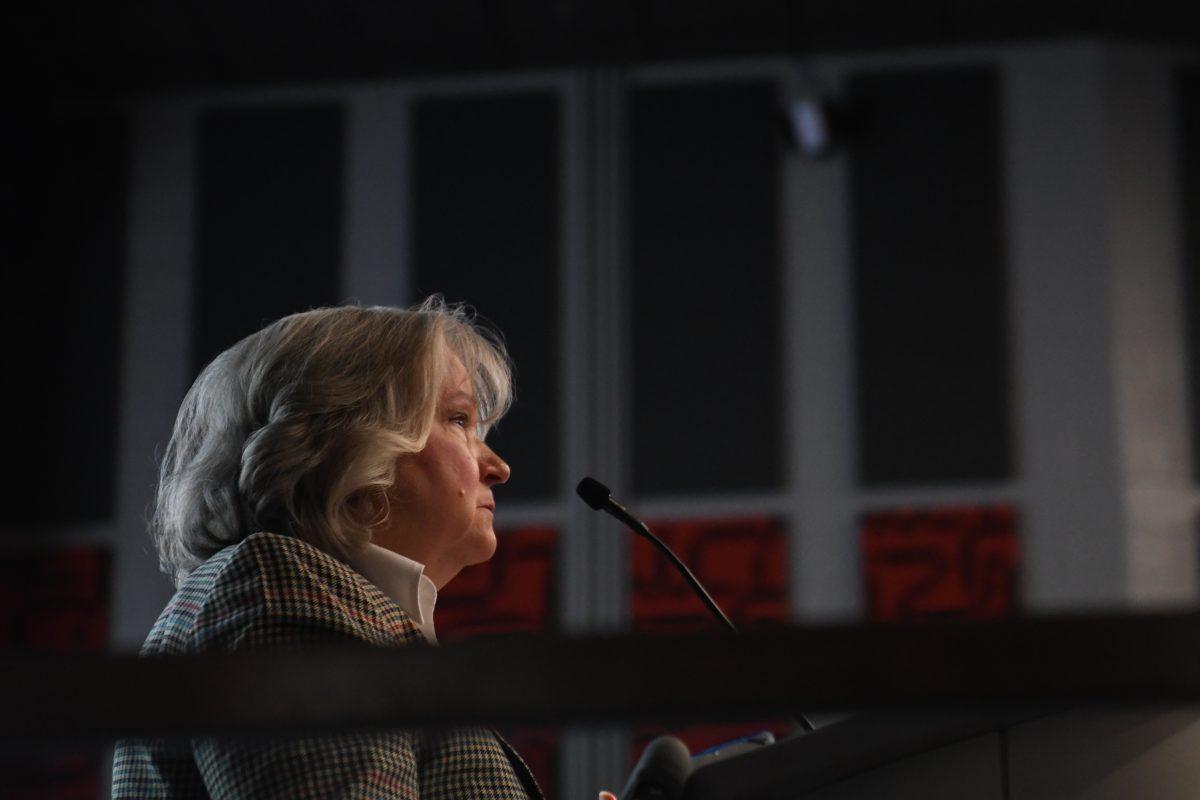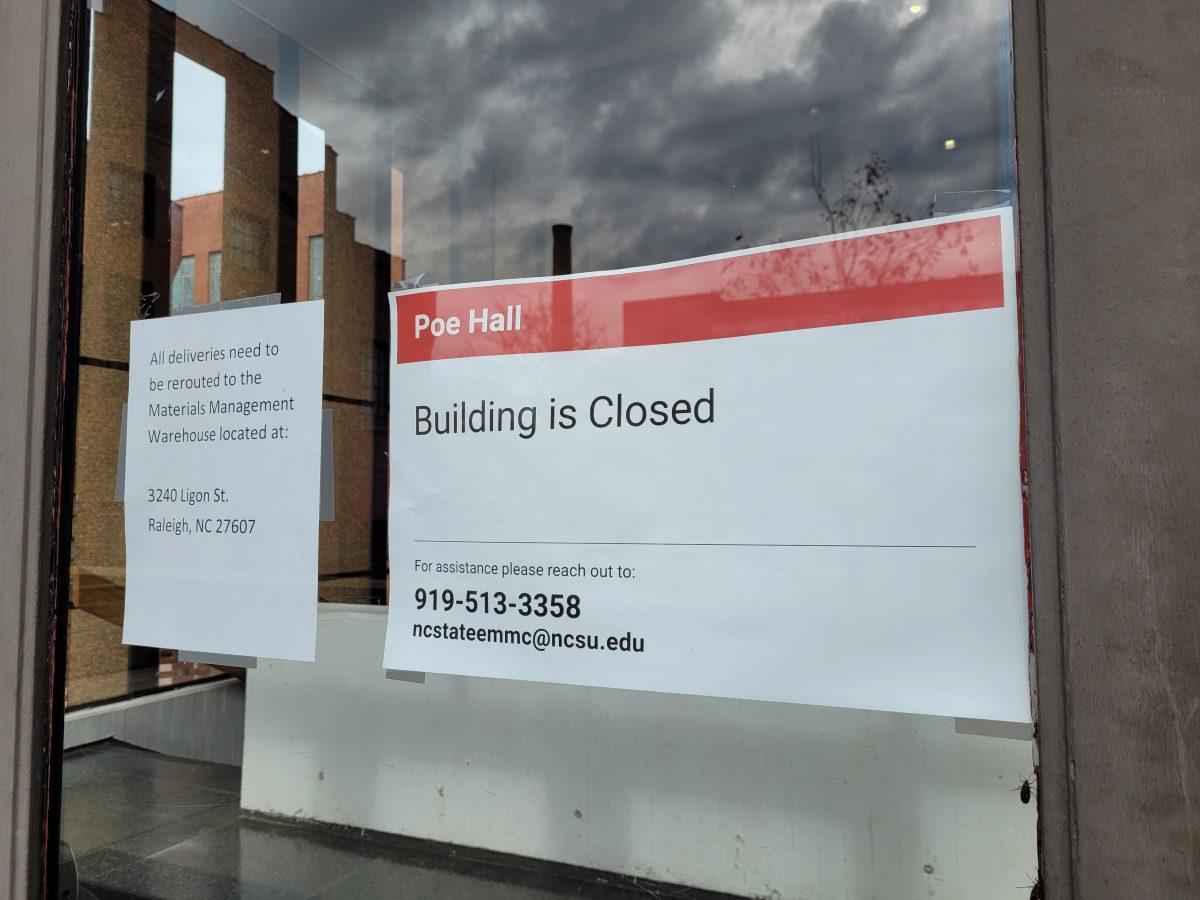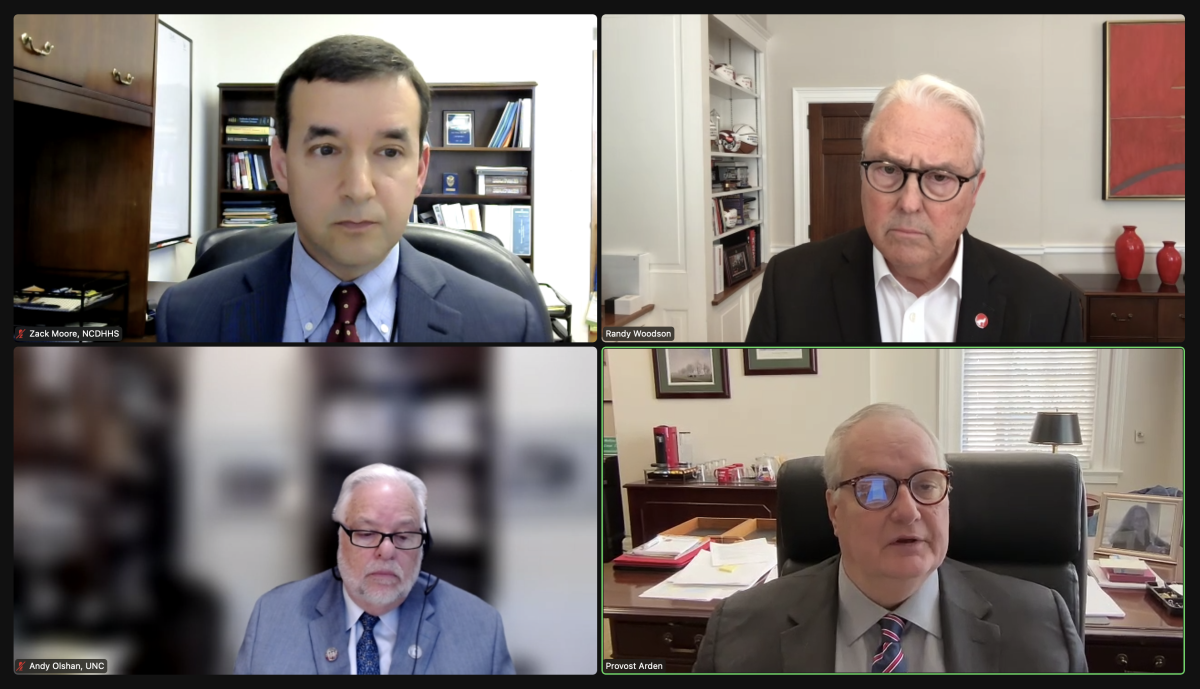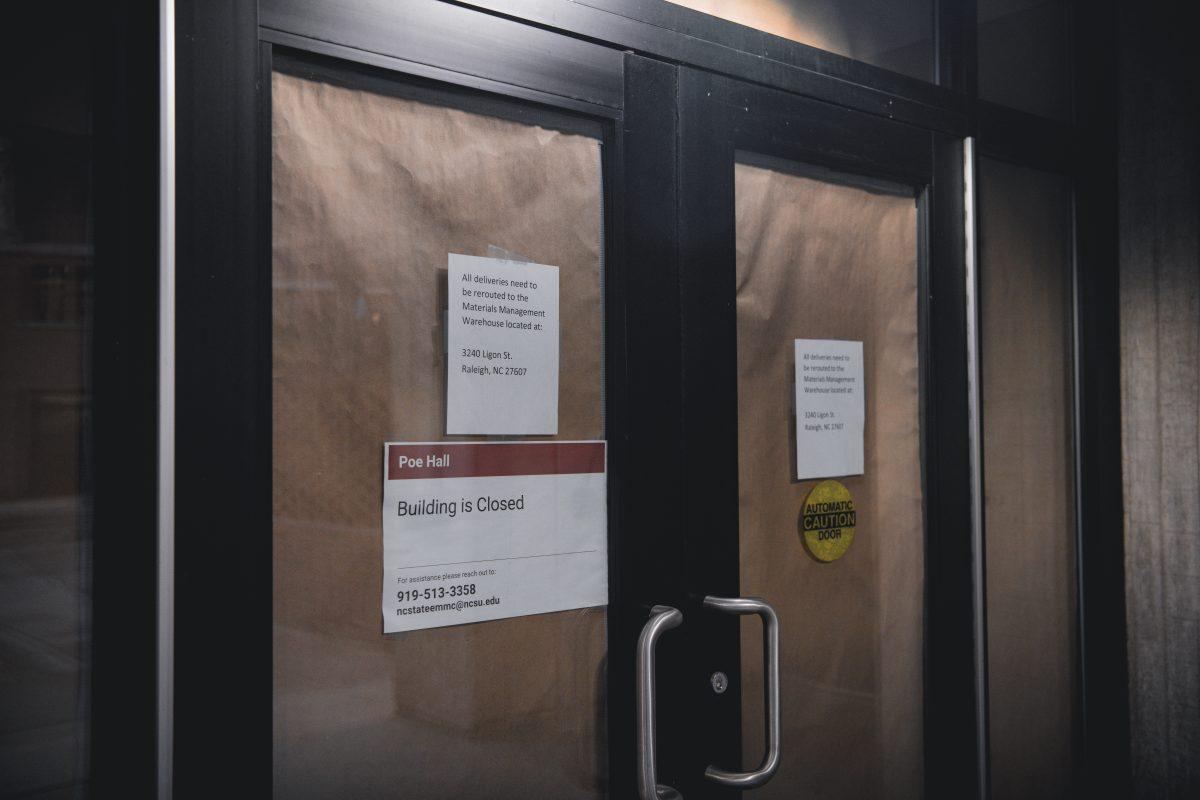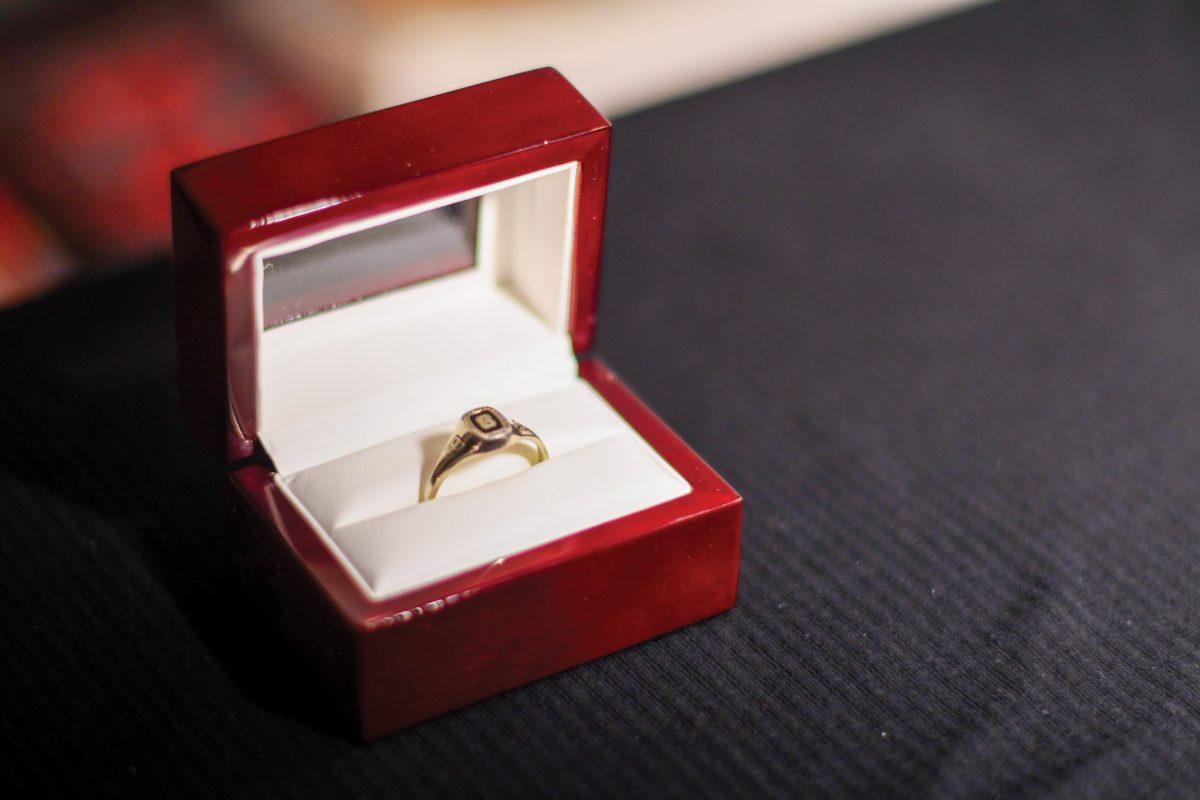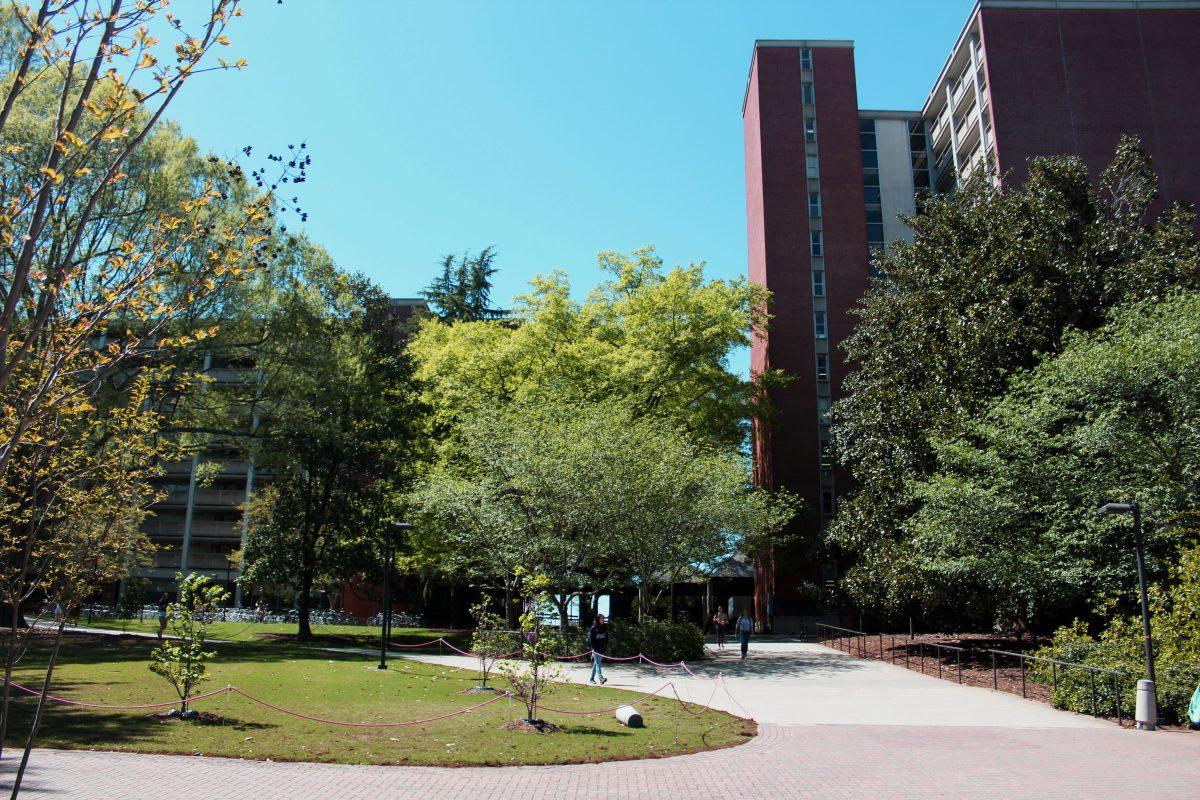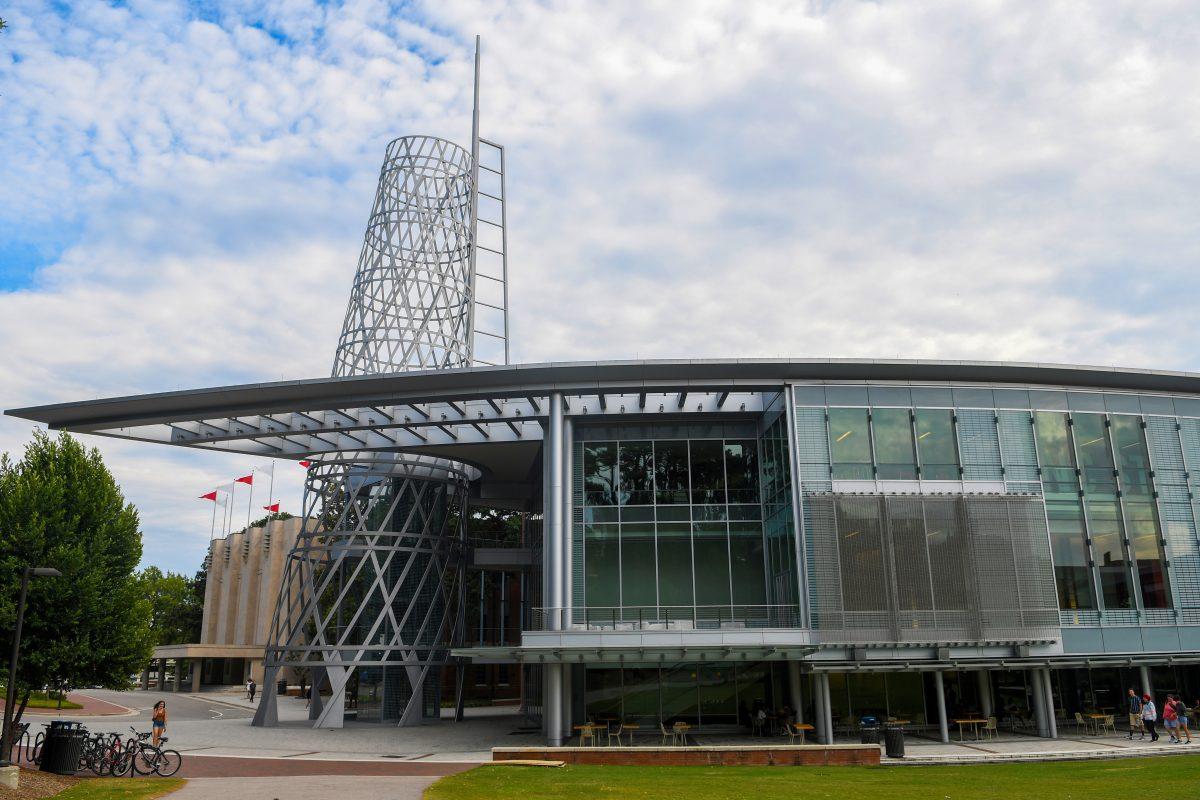While NC State continues its investigation of environmental contaminants in Poe Hall, a top university official acknowledged concerns that early communication about the building wasn’t adequate and promised better transparency moving forward.
Meanwhile, two subject matter experts on PCBs questioned the expertise of the consulting firm conducting the tests of the building on behalf of the University.
After reviewing the initial test report prepared by Geosyntec Consultants, the firm NC State hired to investigate the building, the experts said the testing methods don’t align with best practices and don’t comprehensively test all possible sources.
The two experts came to many of the same conclusions independent of one another.
This comes after Chancellor Randy Woodson said the building will be closed through at least the end of 2024 to continue testing in consultation with state and federal agency partners.
Expert flags lack of certified industrial hygienist
A professional geologist reviewed and certified Geosyntec’s test report — something Robert Herrick, a retired senior lecturer of industrial hygiene at Harvard University and a leading expert on PCBs, said he found puzzling.
“I was just kind of scratching my head like, ‘Well, I’m sure he’s a really reputable, knowledgeable geologist, but does he really know anything at all about indoor environments or industrial hygiene?’” Herrick said.
Jack Springston, a certified industrial hygienist, said in this investigation, he’d think NC State would want the expertise of a certified industrial hygienist. Though an engineer or geologist might be capable of conducting workplace evaluations, he said, a certified industrial hygienist specializes in understanding contaminants, their health effects, how they migrate and how to mitigate them.
Geosyntec referred Technician to the University spokesperson for comment.
When asked whether there are any certified industrial hygienists on the Geosyntec team investigating Poe Hall, Mick Kulikowski, NC State spokesperson, said only that the team includes individuals with expertise in environmental engineering, toxicology and industrial hygiene.
Testing strategy is atypical, experts say
Geosyntec’s first phase of its investigation tested air and surface samples collected with the ventilation systems turned off, which Herrick and Springston both said was unusual.
“I don’t really quite follow the logic there, and I think it might just be that they’re not experienced doing building investigations,” Herrick said.
It’s optimal to collect air samples while a building’s ventilation systems are operating normally, says American Industrial Hygiene Association guidance on addressing PCBs in buildings, which Springston co-authored and co-edited.
Springston said testing with these systems off could yield results that aren’t an accurate indication of what occupants are actually exposed to, and the PCB concentrations in Poe Hall are likely lower with the ventilation systems running.
“The fact that they did the sampling with the units shut down, that in my mind would tell you that that’s a worst case scenario,” Springston said. “If you turn on the ventilation systems, you’re introducing fresh air from outdoors, and it’s going to reduce your concentration.”
The report said while one PCB compound, Aroclor-1262, was found in each indoor air sample, all air sampling results were below the EPA limit. One surface wipe sample had a PCB concentration over the EPA threshold.
Springston said compared to some PCB test results he’s seen in his experience, the results of the initial testing are relatively low, and he would reassure people that the levels are probably not a concern.
But Herrick said it’s not what Geosyntec tested that concerned him — it’s what it didn’t.
“I’ve seen photos of the building, and, you know, where they tended to use the PCBs in the caulk was if you have a building kind of like this one,” Herrick said. “You’ve got those panels on the outside that are like vertical panels. Between each panel, there’s a gray line, right? Well, that’s the caulking material.”
Caulking was overlooked as a potential source of PCB contamination in U.S. schools until a 2004 study that Herrick lead-authored suggested PCB-laden caulk could be widespread in schools built before 1977.
Springston said he suspects the contamination source is caulk because the compound predominantly detected in Poe Hall testing, Aroclor-1262, was commonly used in mastics and caulking.
Kulikowski confirmed to Technician that neither Geosyntec nor NC State’s Environmental Health and Safety has tested caulk samples for PCBs. In the next phase of Geosyntec’s testing, the firm will collect samples from potential sources of PCBs — particularly, the report says, parts of the HVAC system.
Before returning the HVAC systems to operation, the report says Geosyntec may take steps like replacing or encapsulating parts of the mechanical system and cleaning “based on the results of bulk sampling.”
These steps could impact the subsequent test results, Herrick said.
“I’m sitting here kind of scratching my head thinking, ‘Here’s the situation — where the people in the building are really worried and upset to begin with — and this is going to be your strategy for more testing?’” Herrick said. “‘You’re going to get in there and clean up what you think is the source before you test again?’”
Technician asked Kulikowski to clarify what might be replaced, encapsulated or cleaned before further testing.
“Until the investigation is complete, NC State has no plans to modify, remediate, encapsulate or otherwise disturb the HVAC systems, except to continue the investigation,” Kulikowski wrote in an email.
Kulikowski did not explain what disruptions to the HVAC systems would be necessary to continue the investigation.
Warwick Arden, executive vice chancellor and provost, said before the next phase of testing, NC State has to address the current construction on a mainframe in Poe Hall. According to a Facilities list of current capital projects, the construction is on the first floor of the building, and as of the last update on Jan. 30, it was 91% complete.
Herrick said the next step he thinks NC State should take is toward transparency.
“It sounds like getting trust back is going to be a major challenge because they’ve kind of botched it so far, in my opinion,” Herrick said.
Arden says communication will improve
Transparency concerns seemed to reach a pivotal point Feb. 12, when a report revealed College of Education faculty passed two separate votes of no confidence in the chancellor and Arden over how NC State was handling the building’s investigation.
Woodson responded to the vote in a statement that same day and said the University will be more communicative with investigation updates moving forward.
Arden said reflecting on NC State’s updates to the community from early in the investigation, he acknowledges that the immediate functional demands of closing the seven-story building seemed to eclipse communication about occupants’ well-being.
“I think it’s very difficult in the early phases to be as empathetic as you would like to be because you really don’t understand what’s going on — in the building or with people, number one, but number two, you’re so focused on making sure people have an office to go to, making sure students have a class to go to,” Arden said. “There’s just a lot of nuts and bolts that very early on, you have to take care of.”
The University has always acted with occupants’ health in mind, and now, it’s a priority to communicate that, Arden said.
“I understand that it’s upsetting,” Arden said. “It’s emotionally difficult or stressful. So I think it’s important that folks know we do care, and the most important thing that we can do is get them good answers as quickly as we can.”
One way NC State will improve communication about Poe Hall, Arden said, is by expanding the questions and answers page on the Poe Hall updates website using questions collected from faculty.
Scope and cost of current, future testing
Technician reviewed over 700 buildings on NC State’s campus, identified over 100 that students, faculty and staff frequent and compiled a searchable database of these buildings with their build dates. This list isn’t exhaustive; it comprises select buildings used for instruction, research or administration, and it does not include all building renovations.
But this research reveals a number of residence halls and class buildings that were built between 1950 and 1979, when the EPA says there was widespread use of PCBs in construction and renovation.
Arden said the University doesn’t regularly test buildings for PCBs and doesn’t currently have a plan to. He said NC State is focusing on addressing Poe Hall first.
“It’s really not realistic to go around just randomly testing for PCBs,” Arden said. “One of the issues, if you do find, let’s say, very low levels of PCB, do we then close that building?”
Springston said testing buildings for PCBs can create a huge cost.
“You’re damned if you do, damned if you don’t,” Springston said. “If I want to know and I want to protect the occupants so I’m gonna do sampling, and I sample and it comes back positive, you’re like, ‘Oh, s—, I just shot myself in the foot. Now I have to remove it. Not only do I have to remove the material, but I have to remove any materials that might have been contaminated.’”
Herrick said despite the cost, he thinks testing other buildings for PCBs is essential.
“It’s kind of hard to put a price on winning back the trust of people so that they’re comfortable and feel safe working in the building,” Herrick said.
The cost of this investigation has begun to pile up for NC State. As of Feb. 23, it’s paid $8,892.26 for the internal environmental assessment, $14,922.50 to Geosyntec for services relating to Poe Hall and $28,347.75 to outside law firm Kilpatrick Townsend and Stockton for legal representation related to Poe Hall.
The University provided the above information in response to public records requests for billing records. NC State denied Technician’s public records request for its representation agreement with the outside law firm, citing attorney-client privilege.
Herrick and Springston said it’s often more cost-effective to demolish a building contaminated with PCBs than remove all contaminated materials.
In 2001, the University of Rhode Island faced a $3.8 million remediation plan to address PCB-contaminated materials it found in an eight-story class building originally built in 1969. The most costly aspect of the plan was removing 220 windows, window seals and caulking.
Arden said Geosyntec will provide recommendations for remediation in about three to six months, after the next round of testing.
“Poe was a weirdly built building where the HVAC system is embedded into the walls of the building and it’s not easy to access,” Arden said. “I’m really hoping there is a way we can effectively remediate that and return the building to safety and functionality very quickly. We’ve acted, I think, quickly and with the safety of the people in the building in mind.”
This article was updated Feb. 28 at 7:45 p.m. with context about the results of Geosyntec’s report and to include that the University provided public records reflecting payments for the internal assessment and Geosyntec’s services Wednesday afternoon.


